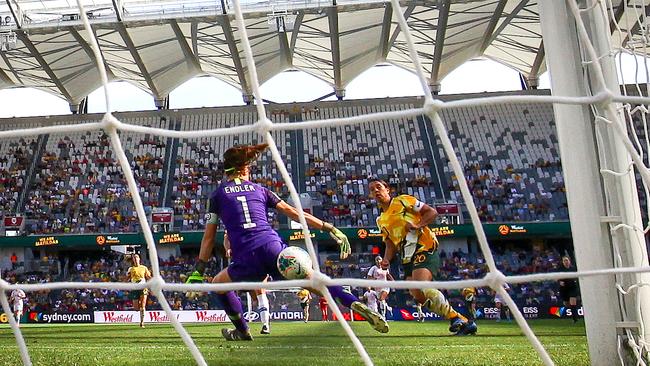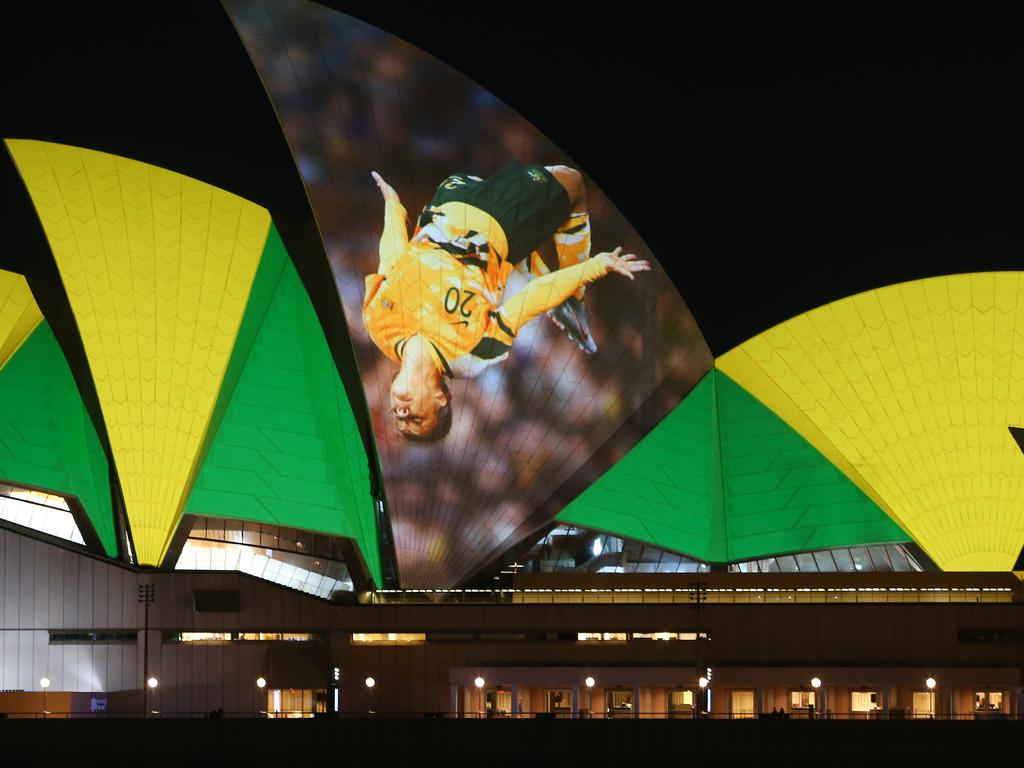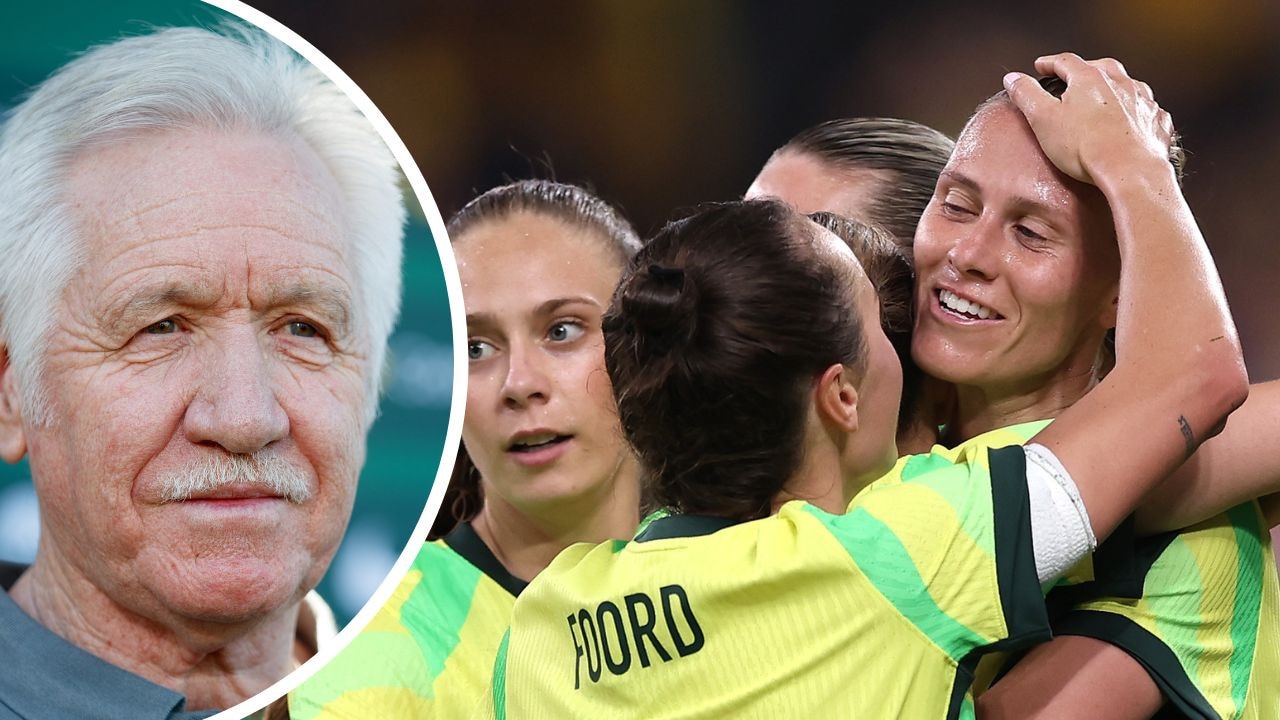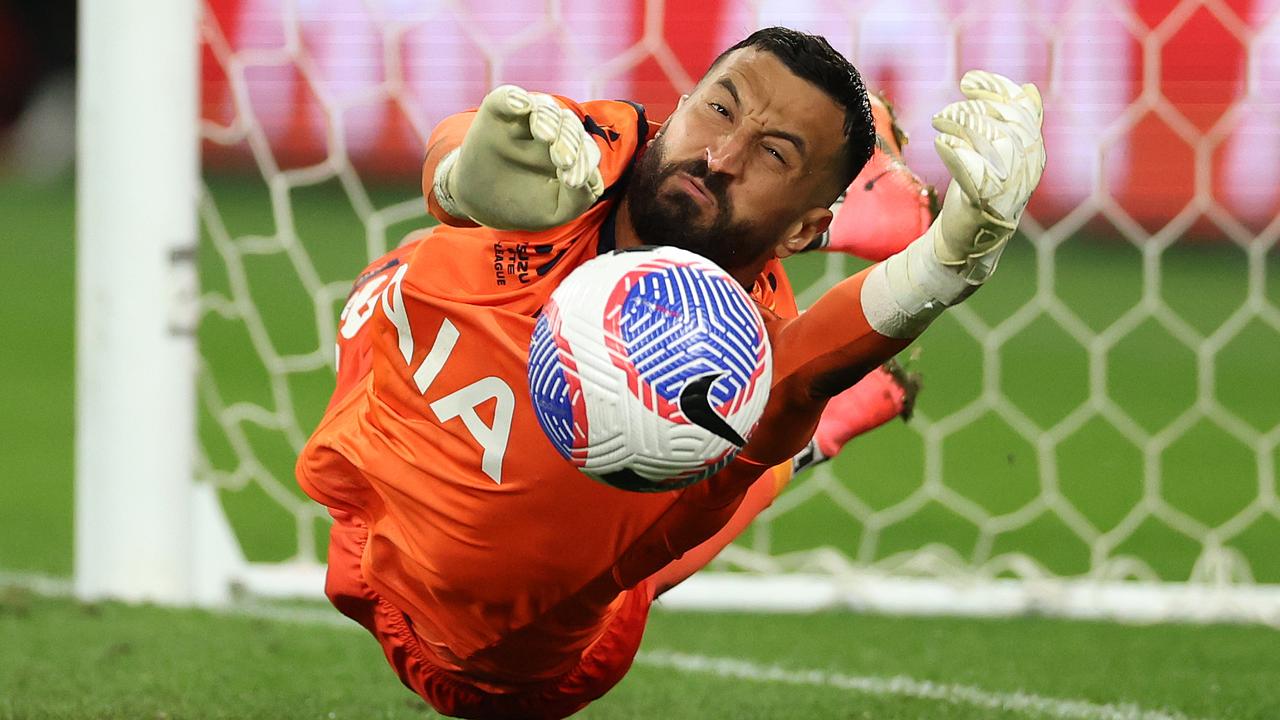2023 World Cup could be $1bn windfall to tip the scales towards gender parity
The tournament should spark big government spending on grassroots and elite facilities for a struggling code.

There’s almost $1bn worth of reasons why the 2023 Women’s World Cup is set to be a smashing success on and off the field.
The month-long tournament will be big enough in its own right, with Football Federation Australia forecasting hosting the 32-team event in harmony with New Zealand will attract about 1.5 million cumulative spectators and likely bring in at least $150m in ticketing and local sponsorship income.
But it is what will happen both before and after the tournament that will help it create a lasting legacy for girls and women playing soccer, and sport in general.
A crucial aspect of the joint organising committee’s “bid document” was information and projections about the number of female players who could be convinced to take up the sport inspired by the world’s best females converging on Australia and New Zealand in three years’ time.
About 23 per cent of registered players currently are females, a number FFA says can reach 50 per cent, or parity, by 2027, thanks to the World Cup factor.
That would be a whopping 10 years ahead of such an achievement without a World Cup on home turf, the estimates go. That will need much needed investment in facilities, at both local level where grassroots soccer clubs are already struggling to cope with a boom in female player numbers in recent years, and at the elite level.
“We are going to put on the best ever Women’s World Cup. There will be a lot of commercial revenues and the government is excited and so supportive,” FFA chief executive James Johnson said on Friday. “We are hoping we will get more government financial support and it will result in us spending more money in women’s football.”
Football administrators estimate about $300m in funding from local and federal governments could be gained as a result of gaining hosting rights, which will pay for much needed improvements in local facilities like changerooms, pitches, floodlights, training infrastructure, new and improved pitches and so on.

What soccer needs to demonstrate though — and the AFL has been a master of this — is a wider benefit to the facilities including health and wellbeing aspects that would be shared with local communities and social and multicultural causes.
It is something FFA is said to be aware of the need to improve on.
Soccer is also keen on winning government funding for a new “home of football” in Sydney and a training base in Melbourne for the Matildas, which could be worth more than $100m combined.
There are two sites under consideration in Sydney, including one near Sydney airport that was once the home of the traditional powerhouse of club football in Australia — St George.
As for the tournament itself, held across seven Australian cities which state authorities are paying an estimated $1m per match for hosting rights, FFA forecasts the total net present value of putting on the event at $286.5m, contained in a report compiled for it by Ernst & Young, including improved health outcomes, the amount consumers pay to attend games, facility improvements and tourism benefits. The report said the NPV between 2019 and 2028 was at least $465m.
It all adds up the biggest moment in women’s sport in Australia ever, and one of the biggest events the country has ever put on.








To join the conversation, please log in. Don't have an account? Register
Join the conversation, you are commenting as Logout